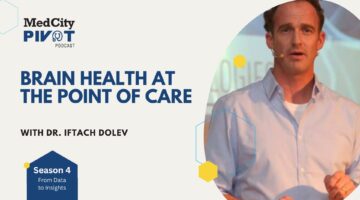
The U.S. healthcare system is spending tens of billions of dollars on GLP-1s. But to truly realize the value of this powerful class of medications, we need to better understand who benefits most.
Just over a year ago, I wrote that the proliferation of GLP-1s introduced a complicated and costly new chapter to the story of America’s obesity crisis. I cautioned that there was still much we didn’t know about these drugs. In the time since, I’ve seen many patients benefit from GLP-1s. But I’ve also had patients come to me questioning why they’re not seeing the dramatic results they expected. Many pinned their hopes on what they believed to be a “miracle drug,” and are confused as to why they stopped losing weight after a few months.
As medical professionals, we now know significantly more than we did a year ago. We know GLP-1s have powerful clinical utility, but we also know they don’t work the same way for everyone. Understanding why will be key to optimizing their value.
A recent University of Chicago study found that for GLP-1s to be considered cost-effective for weight loss alone, the price of Wegovy would need to drop by more than 80 percent and the cost of Zepbound by about one-third. The difference between the current price and what researchers consider justifiable based on average health benefits is considerable.
But here’s the problem with the “average” when it comes to these drugs: not all people respond to them the same way. The real question isn’t just what these drugs cost, but who they’re working for. Our healthcare system doesn’t have a reliable way to reconcile the two.
The metabolism is shaped by a complicated web of biological, behavioral, and environmental factors, all of which make each person’s response to GLP-1s unique. To use these medications effectively, we need to understand how each patient responds to their GLP-1 prescription.
Peer-reviewed studies in Frontiers in Endocrinology have shown that individuals generally fall into one of three responder populations: super-responders, general responders, and non-responders.
For “super-responders,” GLP-1s can be life-changing. According to the research, these individuals lose at least 10 percent of their body weight at any point during treatment. For general responders, efficacy often diminishes over time; the drugs are tolerable, but only modestly effective for a time; they’ll lose at least five to 10 percent of their body weight within three months. Studies show the last population — “non-responders” — will lose less than five percent of their body weight after three months before hitting a plateau, despite the cost, the side effects, and emotional investment.
So, what’s the value of a drug that works exceptionally well for some people, but not all? Persistent response monitoring and personalized programming are the pieces of the GLP-1 puzzle our healthcare system is missing. We can’t know who GLP-1s are working for — or how to sustain their results — without insight into individual response.
Today, general and non-responders may continue to take a GLP-1 long after it’s stopped working, or switch to another brand only to experience the same outcome. There’s no standard, scalable process for monitoring whether these drugs are actually helping those with metabolic dysfunction lose weight in a healthy, sustainable way. Right now, we have a system of prescribing where the responsibility for monitoring outcomes, managing expectations, and shouldering costs falls on the patient.
GLP-1s have real value. I’ve come to see them as a powerful tool for many of my own patients, particularly those who respond in meaningful ways and can sustain those results over time. Until we measure and manage GLP-1 response on an individual level, our healthcare system will continue spending money long after people stop benefiting, and miss opportunities to optimize them for those who stand to benefit most.
Photo: Sezeryadigar, Getty Images
Dr. Lisa Shah is an internist and a healthcare innovator with over 20 years of experience in value-based care focused on the intersection of AI driven technology and compassionate human care. She serves as Executive Vice President and Chief Medical Officer for Twin Health, which uses digital twin technology to address the root causes of metabolic conditions like obesity, prediabetes, and type 2 diabetes.
This post appears through the MedCity Influencers program. Anyone can publish their perspective on business and innovation in healthcare on MedCity News through MedCity Influencers. Click here to find out how.











